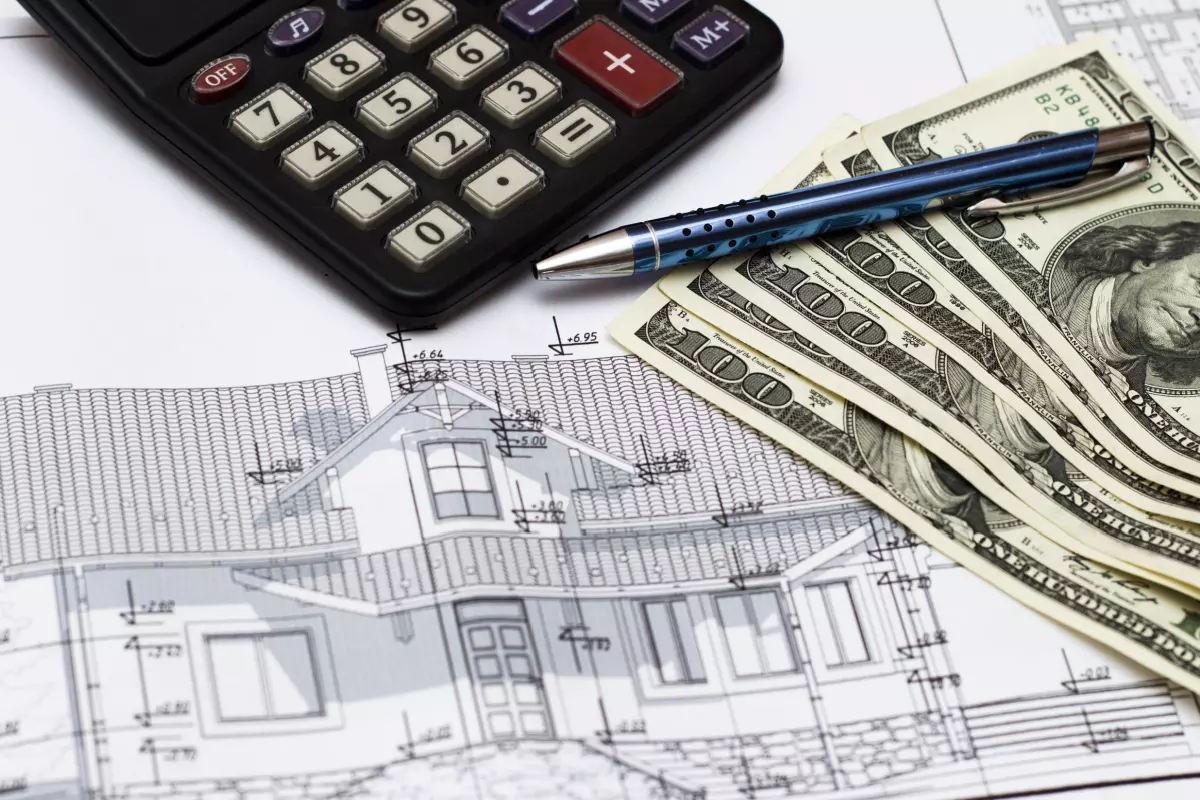What if the secret to thriving as a contractor lies as much in your pricing strategy as in your craftsmanship? The truth is that managing a successful contracting business is a blend of your skills and a smart pricing structure.

In this guide, we simplify the intricate dance of pricing a contractor job. You’ll gain insights into various factors impacting job costs and discover effective pricing strategies. It’s about finding that middle ground where your prices are neither too high to turn away potential clients nor too low to undercut your profits. You need to manage construction costs throughout the project to keep pricing realistic and prevent budget drift.
Let’s embark on a journey to refine your pricing skills, ensuring your craftsmanship and your earnings reflect your true value.
What Are the Typical Fees Charged by Contractors?
When it comes to setting prices, contractors often wonder what the average fee for their services should be. Most contractors charge a 10% to 20% markup on the total project cost. They often give clients a rough breakdown of expenses to keep pricing transparent and easy to understand.
This markup covers overhead expenses like office upkeep, insurance, and employee wages while also including the contractor’s profit. This range offers a general framework for pricing a remodeling job, but other elements will further refine these figures to suit your particular circumstances.
Here’s a table to give you a clearer picture of how average project costs and contractor markups might look for different types of projects:
| Project Type | Estimated Project Cost | Typical Markup Percentage |
|---|---|---|
| Basic Remodeling | $5,000 – $15,000 | 15% – 20% |
| Comprehensive Home Renovation | $20,000 – $50,000 | 10% – 15% |
| New Home Construction | $100,000 – $500,000 | 10% – 20% |
| Small Additions/Repairs | $2,000 – $10,000 | 20% – 25% |
| Large Additions/Overhauls | $30,000 – $100,000 | 15% – 20% |
Factors that Affect Contractor Pricing
Several factors play a role in shaping your pricing strategy as a contractor. It’s not just about the direct costs; aspects like market trends, competition, and your business reputation also weigh in. Understanding these variables helps you create a pricing model that is both competitive and profitable.
Material Costs
These are the costs of raw materials for a project. The costs of materials for a project are subject to change, often influenced by factors such as economic shifts and market trends. For instance, the price of lumber might rise due to increased demand or limited supply, impacting the overall cost of construction projects.
Similarly, metal prices might fluctuate based on global market changes. Staying informed about these factors helps anticipate changes in material costs, allowing for more accurate budgeting and pricing.
Labor Costs
Labor costs are not just about paying wages; they reflect the value of expertise brought to your project. Factors such as years of experience, specialized certifications, and unique skills can influence these costs.
For instance, a contractor with a decade of experience or specific certifications in eco-friendly building practices may command higher wages than someone just starting out. Similarly, projects that require unique or rare skills, like historic restoration work, can lead to increased labor costs due to the specialized expertise required.
State averages are a significant factor in determining labor costs and rates. For instance, hourly rates in states like New York might range from $50 to $70, whereas in Texas, they often fall between $30 and $50.
Administrative and Overhead Expenses
Although not directly tied to specific projects, administrative and overhead costs are integral to the overall operation and sustainability of a contracting business. Here’s a closer look at the main overhead costs that affect how much general contractors charge:
- Office Expenses: This includes rent, utilities, and office supplies. These ongoing expenses are necessary for maintaining the administrative hub of a contractor’s business.
- Insurance and Licenses: Contractors need various types of insurance, such as liability and workers’ compensation, as well as licenses to operate legally. These are recurring costs that ensure compliance and protection against risks. For more insights, you can also review the general contractor insurance requirements that may apply to your business.
- Employee Salaries and Benefits: Beyond wages for on-site workers, contractors must account for salaries and benefits for administrative staff. This includes payroll taxes and any health or retirement benefits offered.
- Vehicle and Equipment Maintenance: The cost of maintaining, repairing, and fueling vehicles, as well as keeping equipment in good working order, directly impacts the bottom line.
- Marketing and Advertising: Investment in marketing and advertising attracts new clients and maintains visibility in the market.
- Technology and Software: Modern contracting businesses rely on various software for project management, accounting, and customer relations. These tools, while improving efficiency, come with subscription or purchase costs.
Profit Margins
In the contractor business, a profit margin is the percentage of revenue that remains as profit after all expenses and costs related to providing services have been deducted. Determining the right profit margin involves considering the size and scope of each project.

A profit margin of 10% to 15% is common for smaller projects, allowing for a fair return while remaining competitive. A higher margin of 20% to 30% might be more appropriate for larger, more complex projects, reflecting the increased resources and risk involved.
Location and Market Competition
The area where you operate significantly influences your pricing. In regions with a higher cost of living or where specific contracting services are in high demand, you may be able to charge more.
Equally, the level of competition in your area plays a part. In a market crowded with contractors, competitive pricing becomes a strategy to attract and retain clients. However, while it’s wise to stay aware of what others are charging, ensure your rates also cover your costs and reflect the quality of your services.
Types of Contractor Pricing Models
Choosing the right pricing guide for contractors is like selecting the right tool for a job – it needs to fit the project and your business style. Each has its strengths, and understanding these can help you decide the best project approach.
Time and Materials (T&M) Contract Model
In a T&M contract, costs are calculated based on two key components: labor and materials. The labor cost is determined by the number of hours worked, often at a pre-agreed hourly or daily rate.
Material costs are the expenses for all the materials used in the project. These are typically charged at cost or with a markup. Additionally, some contractors include other direct costs like transportation or equipment rental in this calculation.
This contractor pricing model is particularly suitable for projects where the requirements are unclear at the outset or likely to evolve. This includes custom projects, repair work, and maintenance services. It offers flexibility to adjust the workload and resources as the project progresses.
Pros
- Flexibility: Ideal for projects with changing scopes. It allows for adjustments without renegotiating the entire contract.
- Transparency: Clients can see exactly where their money is going, which can build trust.
- Fairness: Payment is directly related to the amount of work done and materials used.
Cons
- Uncertainty in Budgeting: Clients may find it challenging to budget, as the total cost is not fixed upfront.
- Potential for Higher Costs: If the project takes longer than expected, the costs can escalate.
- Requires Detailed Tracking: Accurate time and material tracking can be administratively intensive.
Fixed-Price Contract Model
Under the fixed-price contract model, a contractor agrees to complete a project for a set price, regardless of the actual costs incurred. This model is often chosen when project details, scope, and deliverables are clearly defined from the start.

In a fixed-price contract, the total cost is agreed upon before the project begins. This cost is typically based on a detailed estimate of the work to be done, including labor, materials, and overheads. The contractor needs to thoroughly understand the project requirements to provide an accurate estimate. Unlike the T&M model, costs are not adjusted based on actual expenditure, which means the contractor bears the risk of cost overruns.
Pros
- Budget Certainty: Clients appreciate the predictability of knowing the project cost upfront.
- Simplicity: Simpler billing and administrative process, as the price is fixed from the start.
- Incentive for Efficiency: Contractors are motivated to work efficiently to maximize their profit margins.
Cons
- Risk of Underestimating Costs: If the project is underestimated, the contractor bears the additional costs.
- Less Flexibility: Changes in the project scope can require contract renegotiations, which can be time-consuming.
- Potential for Lower Quality: There might be a temptation to cut corners to stay within budget.
Unit Pricing Contract Model
With the unit pricing contract model, contractors charge a set price for each unit of work completed, whether it’s per square foot, per item installed, or another measurable unit. Costs in a unit pricing contract are determined by multiplying the number of units completed by the agreed-upon rate per unit.
This rate is usually established based on a detailed analysis of the costs for labor, materials, and overheads for each unit. Transparency in the cost structure is key, as it allows for adjustments if the number of units changes significantly from the initial estimate.
This model is especially suitable for projects where the work can be easily broken down into uniform units, such as flooring or painting jobs. It’s an effective method for large-scale projects with repetitive tasks, as it simplifies the pricing of varied work volumes.
Pros
- Flexibility in Scope: Easily adaptable to changes in project size or quantity without needing to renegotiate the entire contract.
- Fairness and Transparency: Payment is directly proportional to the amount of work completed.
- Ease of Billing: Simplifies the billing process, as it’s based on quantifiable and verifiable units.
Cons
- Complexity in Estimation: Requires accurate estimation of unit costs, which can be challenging in projects with variable conditions.
- Risk of Unforeseen Costs: If unit costs are underestimated, the contractor may incur losses.
- Potential for Disputes: Disagreements may arise over the measurement and valuation of completed units.
Cost-Plus Contract Model
In the cost-plus contract model, the client agrees to pay the contractor for all project costs plus an additional fee, which could be a fixed amount or a percentage of the costs. Under this model, costs are calculated based on the actual expenses incurred during the project.
These expenses include direct costs like materials and labor, as well as indirect costs such as overheads. The ‘plus’ component is the contractor’s fee, which compensates for the contractor’s expertise and services.
This model is chosen for projects where it’s challenging to define the scope and cost upfront, such as custom renovations. It is also favored in situations where quality is prioritized over cost and the client is willing to pay for unanticipated work or premium materials.
Pros
- Flexibility in Scope: Ideal for projects with uncertain parameters, allowing for changes without renegotiating the contract.
- Quality Focus: Encourages the use of high-quality materials and workmanship, as the contractor is not under pressure to cut costs.
- Transparent Expense Tracking: Clients can see where their money is being spent, fostering trust.
Cons
- Budget Uncertainty: Total project costs can escalate, making it difficult for clients to budget effectively.
- Potential for Increased Costs: Without a fixed budget, there is less incentive for contractors to keep costs low.
- Administrative Intensity: Requires meticulous documentation of all costs, which can be time-consuming.
How to Price a Job as a Contractor?
In contracting, setting the right price for your services is a nuanced and strategic task. It involves considering various factors impacting your earnings and business growth while aligning with market expectations.

And during your sales conversations, it can also help to briefly mention available financing options — this makes the price easier for homeowners to digest and gives them a realistic way to say yes without feeling overwhelmed by the full cost upfront.
Here’s what to take into account:
Setting Your Salary Goal
Determining your annual income goal as a contractor is your first step in pricing your services. This figure influences your hourly or daily rate and shapes your overall pricing approach.
To establish a realistic salary target, research what contractors in your region typically earn, considering your experience and local market demands. Aim for a salary that aligns with local standards while fulfilling your financial requirements.
Calculating Overhead Costs
Overhead costs, directly impacting your operating cash flow for business, encompass the ongoing expenses of running your business, such as insurance, vehicle upkeep, staff wages, and business taxes.
Accurately calculating these expenses ensures that your pricing adequately covers your operational costs. This process involves tallying all fixed costs to determine the minimum amount each job should bring to maintain your business’s financial health.
Determining Profit Margin
Your pricing should also factor in a profit margin – an additional percentage added to your costs. This extra amount aids business growth and is a buffer for unforeseen expenses. The average markup will vary based on the project’s size and complexity.
Setting the right profit margin is about adding an extra percentage to your costs to ensure your business survives and thrives. This margin is your safety net for unexpected expenses and the fuel for your business growth. While the exact margin can vary, industry norms can provide a guide.
A profit margin of around 15% to 20% is standard for most contracting businesses. This range is often seen as a balanced middle ground, providing a fair return while keeping your prices competitive for clients. Adopting this industry standard can help maintain a steady flow of clients and ensure your business continues expanding and adapting to changing market conditions.
Assessing Competition
Understanding your competitive environment is also key for setting appropriate prices. Regularly check the rates of other contractors in your area to ensure your prices are comparable.
This insight helps keep your services attractive and competitive while ensuring profitability for your business. Adjust your pricing as necessary to align with market trends and meet your business objectives.
Assessing your competition sheds light on why repeat customers are important, as maintaining competitive rates contributes to customer satisfaction and loyalty. As a result, satisfied clients are more likely to return for future services and recommend your business to others, fostering a steady stream of work that enhances your reputation in the market.
Final Thoughts
As you enter the nuanced world of pricing your contracting work, remember it’s a blend of art and science. From understanding labor and material costs to considering project duration and your unique experience, each element significantly shapes your contractor pricing strategy.
With this general contractor’s pricing guide, you’re equipped to set prices that reflect the value of your craftsmanship and ensure the sustainability and growth of your business.
Keep adapting and learning as you gain more experience and insights, and you’ll find the path to pricing success in the dynamic contracting world.


